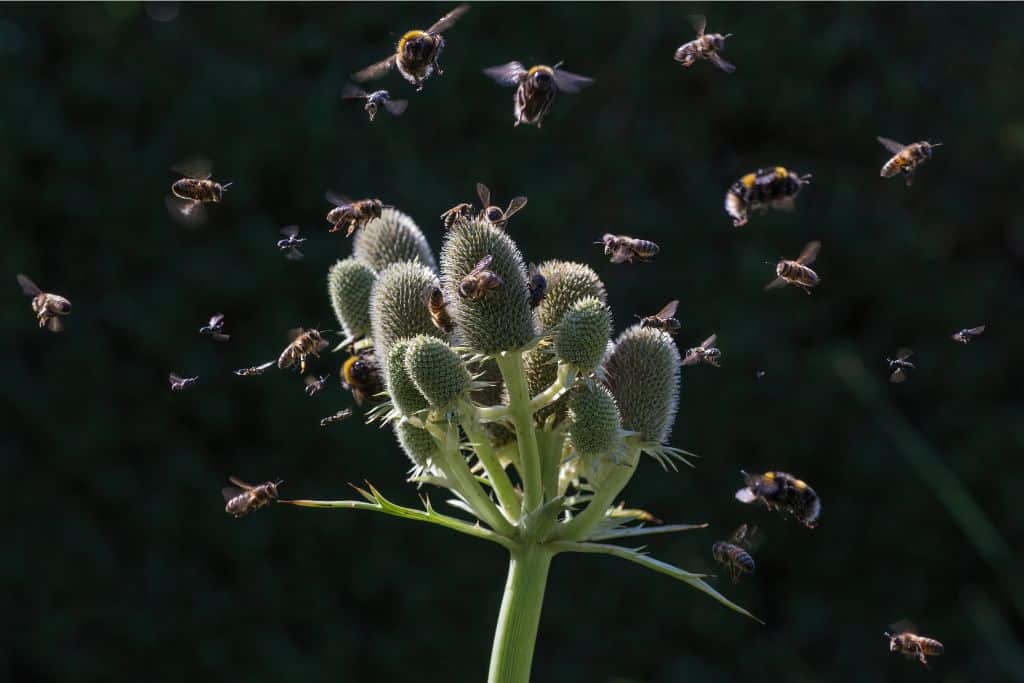The Anthropocene refers to humanity’s most recent and ecologically destructive period – perhaps starting around the time of the Industrial Revolution. Although the term hasn’t been officially adopted by The International Union of Geological Sciences, many specialists agree that we are currently in the Sixth Mass Extinction. While Homo sapiens is the only species capable of disrupting the entire planet’s biosphere, it is also the only one resourceful enough to prevent further rapid declines in biological diversity. This article looks at five major effects of biodiversity loss – and why humans should care. But before discussing the impacts of losing this natural, vital variety, it is helpful to first appreciate the full scope of biodiversity.
—
The Convention on Biological Diversity – a part of the United Nations Environment Programme (UNEP) – defines biological diversity as “the variability among living organisms from all sources including, inter alia, terrestrial, marine and other aquatic ecosystems and the ecological complexes of which they are part; this includes diversity within species, between species and of ecosystems.”
In other words, biodiversity broadly covers the variations found in genes, species, habitats, ecosystems, and ecological processes, and the interconnections between these forms of diversity. Also, larger areas are likely to have a wider range of distinct habitats (more ecological niches), encouraging greater species richness.
5 Major Effects of Biodiversity Loss
1. Impacts on Ecosystem Stability and Services
Like asset diversification in economics, biological diversification also provides insurance,
but against environmental fluctuations and volatility. A 2015 Science article indicates that “a given decrease in plant species numbers [led] to a quantitatively similar decrease in ecosystem stability regardless of which driver caused the biodiversity loss.” For those of us who are not biologists or ecologists, this basically suggests that biodiversity loss results in less stable, less resilient ecosystems.
In addition, the loss of biological diversity threatens essential ecological functions, the ones upon which human life depends.
Biodiversity-ecosystem function relationships are generally positive. So, it seems safe to say that biodiversity loss reduces the effective functioning of ecosystems, also affecting their services.
Ecosystem services are the numerous, life-sustaining benefits that humans derive from thriving ecosystems. The Millennium Ecosystem Assessment divides these benefits into four categories:
- Provisioning services: Tangible resources directly extracted from nature, such as food, water, wood, oils, minerals, plants, and medicine.
- Regulating services: Modulation of natural phenomena to make them safe and useful for humans and other lifeforms. For example, air and soil quality maintenance, water purification, crop pollination, carbon storage, and climate control.
- Cultural services: Non-material, intrinsic benefits that humans have always attained from nature, including “contribut[ion] to the development and cultural advancement of people.”
- Supporting services: The most fundamental services, being the provision of liveable habitats for diverse lifeforms, and the creation and maintenance of genetic diversity.
Not only does biodiversity loss impact individual species, but it also alters their symbiotic interrelations with other species and their habitats. In turn, ecosystem functions and aforementioned services are disrupted, with widespread consequences for humans and other life on Earth.
2. Accelerated Extinction of Species
Many experts agree that the Sixth Mass Extinction is underway. Species numbers continue to disappear because of anthropogenic climate change, habitat destruction, overexploitation and over-harvest, pollution, and introduction of invasive species. Compared with the natural extinction rate (if humans weren’t around), the current one is around 1,000 to 10,000 times higher.
The International Union for Conservation of Nature (IUCN) writes that the climate crisis is disrupting the survival of all the threatened species on its Red List. As of March 2023, out of its 150,300 assessed lifeforms, about 42,100 – over a quarter – are uncomfortably close to extinction. This number of (currently assessed) threatened species comprises:
- 41% of amphibians
- 69% of cycads
- 37% of rays and sharks
- 36% of reef corals
- 34% of conifers
- 28% of selected crustaceans
- 27% of mammals
- 21% of reptiles
- 13% of birds
Also – related to the above association between biodiversity and ecosystem stability – extinction cascades are more likely “when other species are not present to fill the ‘gap’ created by the loss of a species.” Biodiversity decline fuels further biodiversity decline. This is another effect. In response, the IUCN has established a global Reverse the Red movement, seeking to empower diverse actors to reverse biodiversity loss.
You might also like: 10 of the World’s Most Endangered Animals in 2023
3. Increased Zoonotic Disease Transmission to Humans
A zoonotic disease, or zoonosis, is an infectious disease in humans that originates from pathogen transmission via non-human animals. These pathogens (viruses, bacteria, parasites, prions, etc.) are contracted in many ways. Examples include direct contact, indirect contact (from the environment), food consumption, drinking water, and insects and ticks.
The transmission process itself is called “zoonotic spillover.” In fact, the origins of around 60-75% of human infectious diseases can be traced back to zoonotic spillover. Such diseases encompass monkeypox, Covid-19, AIDS, Ebola, Lyme disease, dengue fever, and Zika.
According to a 2020 Biodiversity and Conservation article, “the intensifying emergence of infectious pathogens has many underlying reasons, all driven by the growing anthropogenic impact on nature.”
Human population growth has led, for instance, to increased land clearing for establishing croplands and pastures – a main source of biodiversity loss. People working in these regions are more likely to come into direct or indirect contact with wild animals and livestock, and their pathogens. Land clearance also creates space for more transportation links from rural and remote regions to densely populated urban areas. Thus, the spread of zoonotic diseases is sped up.
Naturally, habitat loss affects non-human species, including those carrying pathogens. One consequence is that many wild animals are advancing closer to human communities, leading to higher disease transmission and human–wildlife conflict.
You might also like: What’s the Link Between Climate Change and Disease Outbreaks
4. More Conflict Between Humans and Wildlife
Related to the last point, human-wildlife conflict is any negative interaction between people and wild animals. It covers crop and property damage, physical injury, and even loss of human life. The tension is a significant issue for sustainable development efforts
A research article focussing on Ethiopia identifies biodiversity loss as heightening inter-species conflict between humans and wildlife. Major friction sources are agricultural expansion, human settlements, overgrazing by livestock, deforestation, and poaching. The authors mention that deforestation in and around Bale Mountains National Park occurs to expand human communities. But, with less vegetation in these areas, the feeding, nesting, and mating sites of wild animals are disrupted. So, human-wildlife conflict arises.
Regarding land conversion, “agro-pastoral habitats constitute the most widespread anthropogenic biome, covering 38% of Earth’s ice-free land.” Unfortunately, agricultural expansion is also the single greatest threat to biodiversity. Many species adapt to the ubiquitous habitat loss by foraging and hunting in these croplands and pastures. As a result, agropastoralist communities face threats from wild animals, especially larger ones. Sometimes they engage in retaliatory hunting, further endangering wildlife.
5. Threatened Food Security and Medicinal Resources
As brought up in a UNEP report titled Food Systems Impact on Biodiversity, people naturally desire to cultivate land for the mass production of cheap food. We need to eat to survive, and it only seems fair to offer everyone food at affordable prices.
But, as the report highlights, the costs associated with unviable agricultural practices don’t just vanish. Instead, they are transferred to the very land and environment from which the food comes.
Ironically, food security will be hard hit if unsustainable agricultural and farming practices continue. Agricultural expansion has already eroded large swathes of land, affecting soil, insect, plant, and mammal biodiversity. However, all forms of biodiversity, such as microbial, horticultural crop, and animal biological diversity, are crucial for long-term, sustainable food production.
Moreover, for millennia people have turned to nature for medicinal resources. The current rates of biodiversity loss impact not just traditional medicine, but modern pharmaceuticals and drug innovations, too. Remember that biodiversity “provides a vital link to critically expand the molecular diversity necessary for successful drug discovery efforts in the future.”
Conclusion
Current life on Earth is the result of around four billion years of evolution. We live on the only planet known to have the perfect conditions for creating and sustaining life – not just human life, but that of all the diverse lifeforms making up the biosphere. However, anthropogenic biodiversity loss, across multiple trophic levels, is causing devastating ramifications for both non-human animals and humans.
You might also like: The Remarkable Benefits of Biodiversity


















